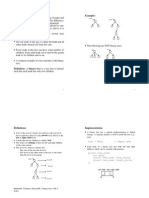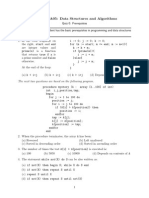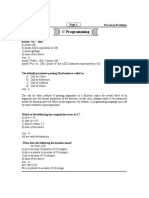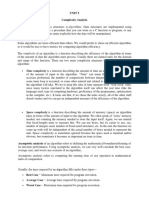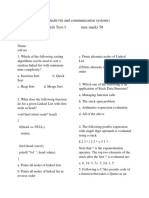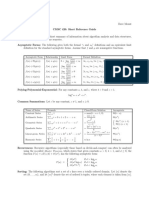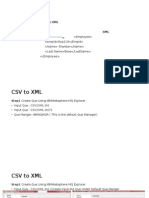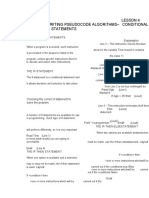0% found this document useful (0 votes)
35 views6 pagesTutorial ISM3 Algorithms
This document contains a tutorial on advanced data structures and algorithms. It includes 10 exercises covering topics like binary trees, binary search trees, tree traversals, analyzing time complexity of algorithms, and writing functions to count/sum nodes in binary trees. The exercises involve tasks like drawing trees after insertions, determining tree heights/depths, traversals, and analyzing time complexity of code snippets.
Uploaded by
Joel GounoueCopyright
© © All Rights Reserved
We take content rights seriously. If you suspect this is your content, claim it here.
Available Formats
Download as PDF, TXT or read online on Scribd
0% found this document useful (0 votes)
35 views6 pagesTutorial ISM3 Algorithms
This document contains a tutorial on advanced data structures and algorithms. It includes 10 exercises covering topics like binary trees, binary search trees, tree traversals, analyzing time complexity of algorithms, and writing functions to count/sum nodes in binary trees. The exercises involve tasks like drawing trees after insertions, determining tree heights/depths, traversals, and analyzing time complexity of code snippets.
Uploaded by
Joel GounoueCopyright
© © All Rights Reserved
We take content rights seriously. If you suspect this is your content, claim it here.
Available Formats
Download as PDF, TXT or read online on Scribd
/ 6


















